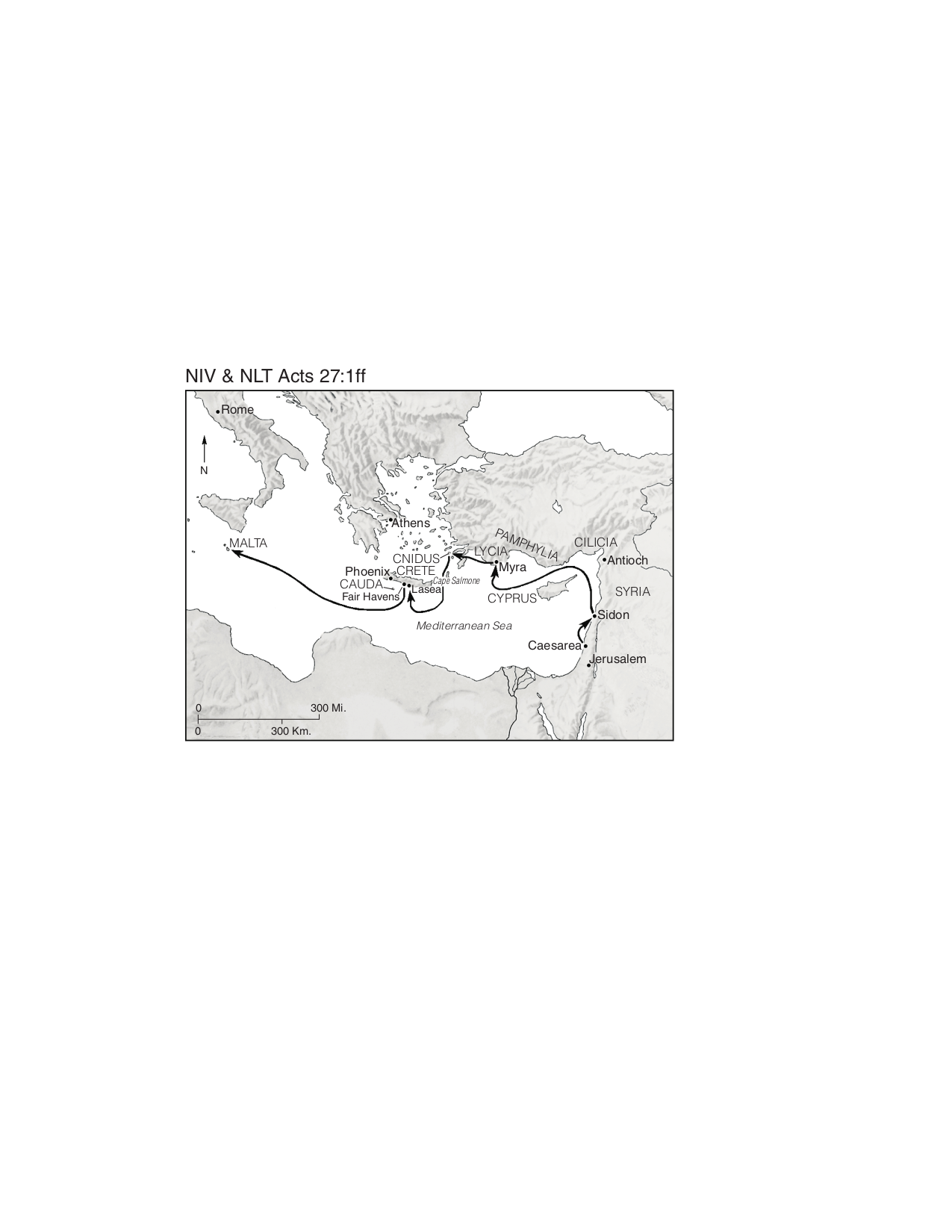Open Bible Data Home About News OET Key
A B C D E F G H I J K L M N O P Q R S T U V W XY Z
Tyndale Open Bible Dictionary
Intro ← Index → ©
MALTA
Island in the Mediterranean Sea, south of Sicily. The name Malta occurs only once in the Bible (Acts 28:1, KJB “Melita”), in connection with the shipwreck that occurred on Paul’s voyage to Rome (25:11-12). This voyage was undertaken during the winter, the season in which storms are most likely to be encountered on the Mediterranean. The ship proceeded cautiously, for contrary winds were blowing (27:4). With difficulty they reached the harbor of Fair Havens on Crete (vv 7-8). In spite of a warning by Paul, the decision was made to try to reach the Cretan port of Phoenix, which was more suitable for wintering (vv 9-12).

Shipwrecked at Malta
Paul began his 2,000-mile (3,218-kilometer) trip to Rome at Caesarea. To avoid the open seas, the ship followed the coastline. At Myra, Paul was put on a vessel bound for Italy. It arrived with difficulty at Cnidus, then went to Crete, landing at the port of Fair Havens. The next stop was Phoenix, but the ship was blown south around the island of Cauda, then drifted for two weeks until it was shipwrecked on the island of Malta.
Caught by a severe storm and driven helplessly by the wind for 14 days, the ship finally neared land during the night. In the morning, the ship tried for the beach but ran aground and was pounded to pieces by the surf. Everyone managed to reach the shore safely. While putting wood on a fire, Paul was bitten by a viper. The natives of the island supposed that he was a criminal whose life was being taken by the bite of a snake. When he did not fall down dead, they radically changed their opinion of him and regarded him as a god (Acts 28:6).
The island of Malta is about 60 miles (96.5 kilometers) from Sicily and has an area of 95 square miles (246.1 square kilometers). St. Paul’s Bay marks the traditional site of the shipwreck of Acts. The island is essentially agricultural, but production is poor because of the thin calcareous soil. Terracing is practiced in order to utilize the soil to the fullest extent. The island has no rivers and is dependent on rainfall and springs for its water. The climate in general is mild, but in the summer the island is subject to the hot, dust-laden sirocco from the deserts of Libya.
